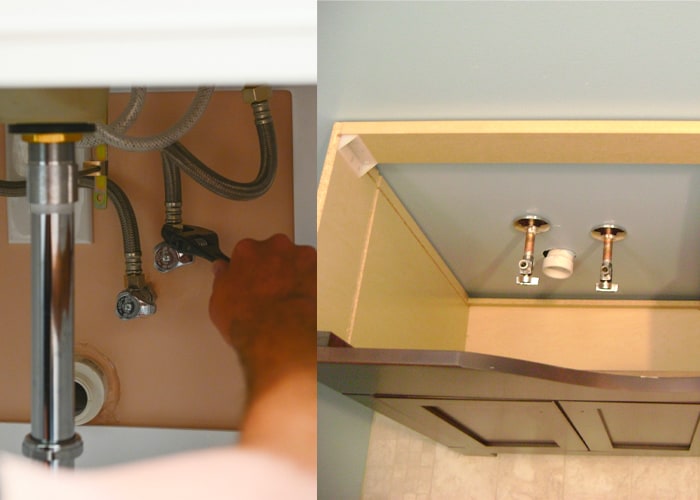Experienced home DIY redoers and professional home renovators are at a consensus when it comes to this question. It’s generally not that difficult to replace bathroom vanity.
However, the level of difficulty that you will encounter when it comes to replacing a bathroom vanity will generally depend on your home DIY and plumbing skills, as well as your knowledge on how to approach the task at hand.
This article will discuss the difficulty of replacing a bathroom vanity. It will also put into perspective the possible dilemmas that you will encounter throughout the whole replacement process.
Do you know beforehand?
Table of Contents
If you are experienced with DIY or have previously replaced a bathroom vanity before, chances are, this task will undoubtedly be easy for you. Since you have previous experience that you can reference, you can go about the process much faster because you are confident with your actions.
Now, suppose you haven’t replaced a bathroom vanity (which I assume that this is you—why else would you consult this article, otherwise?). In that case, you will find yourself groping in the dark, asking yourself what comes next after turning off the valves, or after removing the vanity top.
That’s why it’s essential to consult how-to articles detailing this process so that you are not entirely blind in replacing your bathroom vanity.
Are you comfortable with a certain amount of plumbing work?
Generally speaking, removing the vanity (countertop and cabinet) is the easiest part when replacing the whole vanity. The hardest comes with the plumbing work and its connection to your house’s plumbing system.
The first possible plumbing difficulty that you will face is the valves. You will have to turn them off counterclockwise to shut off the water supply. However, pipes do deteriorate and become defective over time. If your valve is not working correctly, you may need to replace or repair the valves before turning back to your original plan.
Another thing to consider when it comes to the plumbing part of this project is your comfort when working with pipes and valves. You have to remember to place a bucket under your sink when working with the P-drain. Otherwise, you’d turn your whole bathroom floor into a mess that would require you to clean and take time off of the main project.
Now, when it comes to your new vanity, you have to carefully sift through a few things. Do the fittings in your new vanity faucet align with your tubes? Does the sink drain match your already existing P-drain? If there are some problems with the fittings, such as a tight or loose fit, you would have to make a few adjustments to match your new vanity with your home plumbing system. These adjustments will most probably include the replacement of certain vanity parts to the correct size.
How good is your caulking skill?
Most vanities are glued to the wall, and yours probably is, too. To remove your existing vanity and replace it with a new one, you would need to remove the caulking (to separate the vanity from the wall). You’d have to use a sharp knife and get in between the crevice adjoining the vanity and the wall. You have to be as close to the wall as possible, to remove as much caulking as you can.
Also, depending on your new vanity, you may need to apply caulk to join the vanity top and cabinet together and caulk the whole vanity to the wall. It’s not that difficult to do, and there’s no real challenge to it but to apply the caulk as steadily as you can.
What is the type of plumbing for your existing vanity?
Generally speaking, if your vanity is mounted to the wall, it’s relatively easy to remove and replace it. However, if you are working with a vanity with floor plumbing, things will get much more complicated. Working with the flooring will require more work and skill as compared to working with the wall. However, your job will undoubtedly be much easier if you are working with tile.
What is the type of plumbing for your new vanity?
I think it goes without saying, but if your new vanity and old vanity have different types of plumbings, things will undoubtedly be more complicated for you. You would have to open up a new plumbing system and close off the old one. This requires working with the main plumbing stem of your home and making sure that it is properly connected to the vanity sink. Next, you would have to remove the plumbing that is no longer needed and cover up the holes made by the tubes by using tile.
Because of this, it’s not advisable to get vanities with different plumbing systems.
How does the new vanity cabinet look?
Inspect your new vanity cabinet closely. Does it have a solid back or a baseboard? If you have a wooden vanity with a solid back, and it will be connected to your wall plumbing, you would have to measure and cut holes out of the back if it’s made out of wood so that you can easily feed your wall tubes to the inside of the vanity cabinet. If your vanity has a baseboard, some minor trimmings are needed to fit your new vanity with the already existing vanity baseboard.
Is your new vanity the same size or a different size from the old vanity? It will probably be a different size or different shape. In which case, the repainting of the wall and removal of excess caulking is needed to prepare the space for the new vanity.
Most of the difficulties you will encounter when it comes to replacing a bathroom vanity lie in matching your existing plumbing system after making off the remnants of the old vanity.
It’s certainly manageable with the right knowledge, and it will be much easier if you take it one step at a time.

